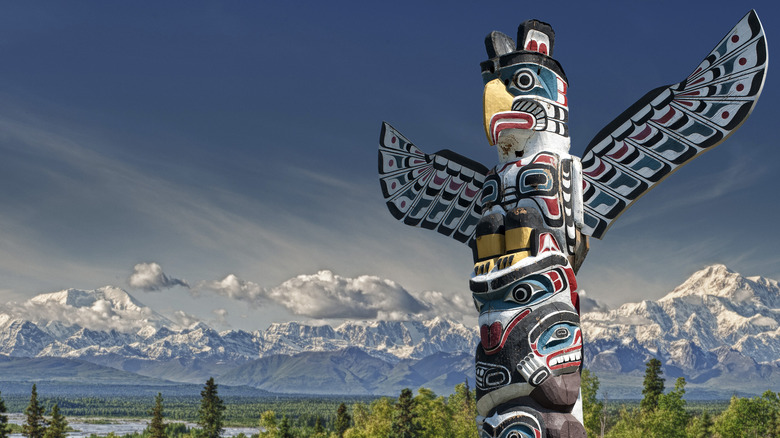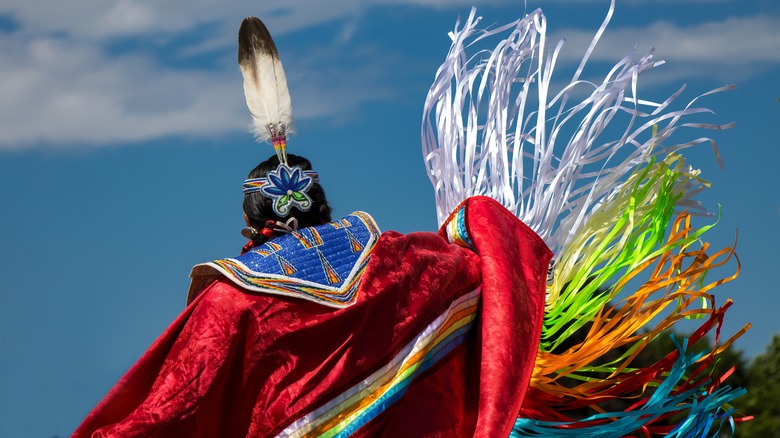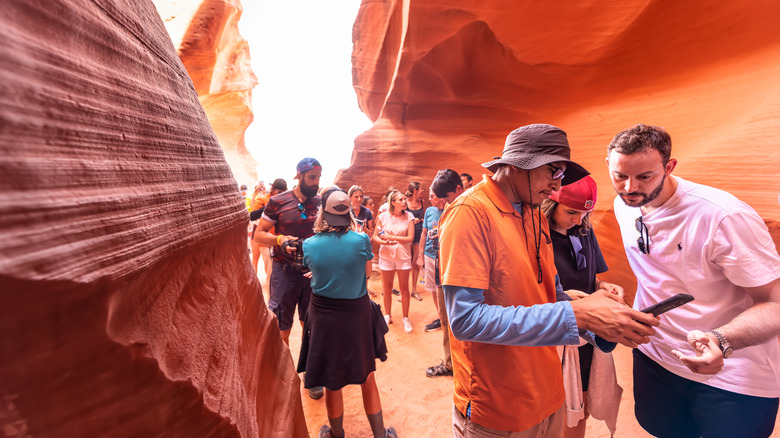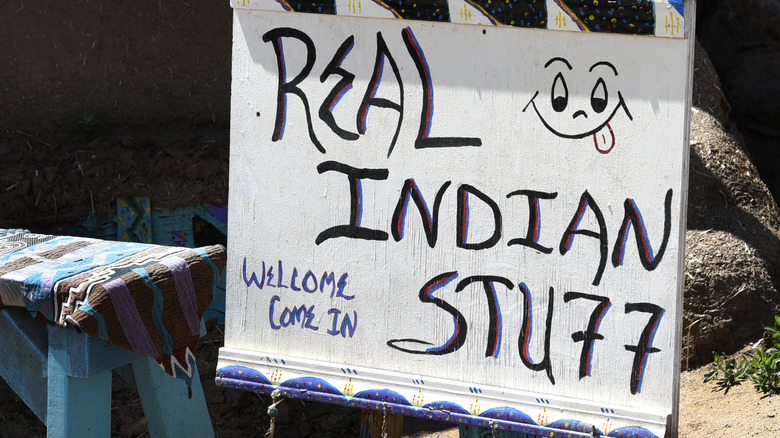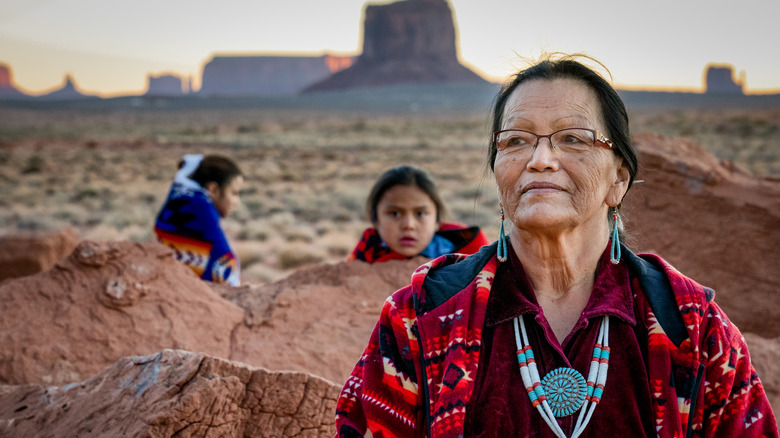Your Complete Guide To Indigenous Travel
It's easy to dismiss terms like sustainable tourism, eco-tourism, and slow travel as industry buzzwords rather than an actual reflection of many peoples' modern approach to travel. But the broad concept of responsible travel isn't merely an industry trend — it's helping to shape the industry's landscape for the better.
Whether we're speaking of cultural mindfulness or staying at green hotels, the concept of responsible travel has gradually (and slowly in many cases) incentivized travel companies, tourism boards, and other industry-related businesses to provide meaningful, non-exploitive, intentional, and sustainable experiences for travelers.
The heightened demand for Indigenous tourism reflects this growing preference for authenticity and sustainability. While some may still deem "Indigenous tourism" as another marketable buzzword, the rapid growth of authentic and community-led Indigenous experiences within the travel industry is undeniable.
Instead of tokenism and exploitation, authentic Indigenous travel allows tourists to meaningfully engage with Indigenous communities. At the same time, economic development helps these communities to preserve and share their heritage and culture sustainably. In essence, Indigenous travel is an example of the positive implications of tourism. However, if you're interested in an Indigenous experience during your next trip, there are a few things to know about this type of tourism.
What is modern Indigenous tourism?
Outsider interest in Indigenous cultures is nothing new, and a form of Indigenous tourism has been around for centuries. Unfortunately, past formats of Indigenous tourism have largely been exploitive and appropriative, and in most cases, operated by someone outside the Indigenous communities.
Although Indigenous peoples of the U.S. and Canada comprise a large percentage of the Western Hemisphere's population, the generational practice of marginalization and assimilation has led to cultural underrepresentation. In turn, exploitive forms of Indigenous tourism supplemented this underrepresentation with cultural tokenism.
Today, a new form of Indigenous tourism has emerged in which the associated businesses of the tourist experience are owned and-or operated by members of the Indigenous community. Not only does this construct help to provide a more authentic, immersive experience for tourists, but the revenue gained flows largely back into the community. The economic benefits work to preserve the group's heritage, while the authentic tourist experience helps to revitalize cultural representation.
Opportunities for Indigenous travel experiences
There are currently 574 federally recognized Indigenous tribes in the U.S., while the Indigenous population in Canada comprises 630 First Nation communities, as well as Inuits and the Métis. Each of these groups has its own distinct heritage. As Indigenous tourism continues to grow, sightseers will enjoy more opportunities for cultural immersion.
Geographically speaking, Indigenous tourism opportunities may depend largely on the land and the communities of that region. For instance, if you're in Arizona, you could tour Antelope Canyon with a Navajo Nation tour guide. In Quebec, you could join the Essipit Innu Nation for a whale-watching tour on the St. Lawrence River.
While these are only two examples of Indigenous tourism, there is a subtle difference between the experiences, and this distinction may help to expand the notion of Indigenous travel opportunities for travelers. Navajo Parks and Recreation protects Antelope Canyon, and to ensure visitor safety and prevent vandalism, Navajo guides must accompany canyon guests. Nonetheless, the guide enhances the experience immensely.
However, in Quebec, there are plenty of whale-watching tour operators to choose from, but an Indigenous guide can deepen the experience by explaining how Innu traditions closely relate to the animals you see. You can incorporate Indigenous tourism into many aspects of your travel in most regions, states, provinces, and cities throughout North America. Indigenous travel isn't limited to visiting protected or tribal lands. You'll just need to search for opportunities.
Benefits of Indigenous tourism
As previously stated, authentic Indigenous tourism can benefit tourists who seek opportunities and the communities who provide them. For tourists, Indigenous travel can provide immersive, authentic experiences that expose us to new cultures, traditions, and human stories. For many, cultural immersion to gain a deeper understanding of the surrounding world is a large motivation for traveling.
For Indigenous peoples, tourism offers the opportunity to expand cultural awareness and highlight the local community while employing community members and supporting local entrepreneurs. The economic impact of tourism also allows Indigenous communities to revitalize and preserve cultural traditions.
A report released by the American Indian Alaska Native Tourism Association (AIANTA) concluded that Indigenous tourism is now a $14 billion industry, with 40,618 businesses providing 117,852 jobs across the U.S. Unlike in the past, Indigenous-owned enterprises can better avoid exploitation and use the industry as a vehicle to promote reconciliation.
The challenges of heritage tourism
While authentic, ethically-operated Indigenous experiences can prove incredibly rewarding for tourists and Native communities alike, Indigenous tourism isn't immune to the same challenges that the tourism industry, as a whole, continually faces. First, any time an experience mixes with financial incentives, there will be the risk of commodification.
Historically, tourism has threatened Indigenous populations' authentic traditions and lifestyles, as communities have been encouraged to perform — rather than to share practices or live naturally — for voyeuristic tourists. However, this exploitation has largely been perpetrated by outside entities and not community-led businesses.
Secondly, overtourism can significantly deplete natural habitats and heritage sites. However, given most Indigenous populations' sensitivity to wildlife areas and sacred sites, Indigenous-led tourism may be better positioned to implement sustainability practices to mitigate its growing demand. While Indigenous tourism does provide Native communities with the freedom and self-determination to overcome these challenges, there are still ways to be responsible tourists when choosing Indigenous experiences.
Importance of being a responsible Indigenous tourist
As a tourist, your decisions can help shape the direction of Indigenous tourism. Perhaps the most important thing to consider is ensuring that the Indigenous experience or business is owned and-or operated by Native community members. If not, you could unwittingly harm and exploit the particular community while receiving an inauthentic experience.
One way to ensure authenticity is to research the community or tribe first. Typically, the community will list any associated businesses and experiences. Fortunately, there are also plenty of organizations that help tribes to market their tourism businesses. For example, you can search for specific tribes and any associated experiences through the websites of the American Indian Alaska Native Tourism Association (AIANTA) and the Indigenous Tourism Association of Canada (ITAC).
After locating a reputable and authentic company, your next responsibility is to simply absorb the experience. Indigenous tourism is based on cultural exchange and learning. As a traveler, you made it there. As a responsible tourist, you merely need to listen.
